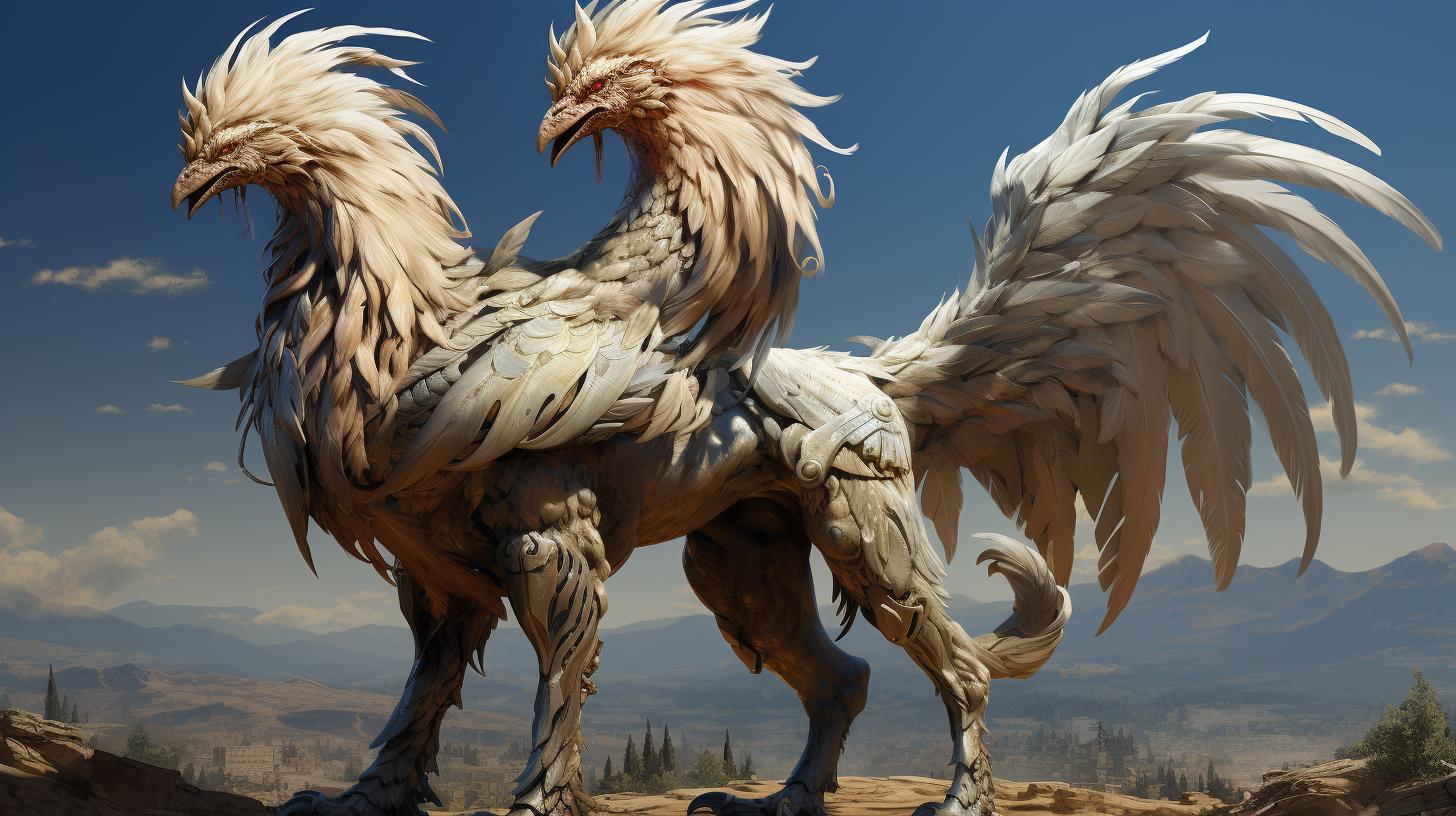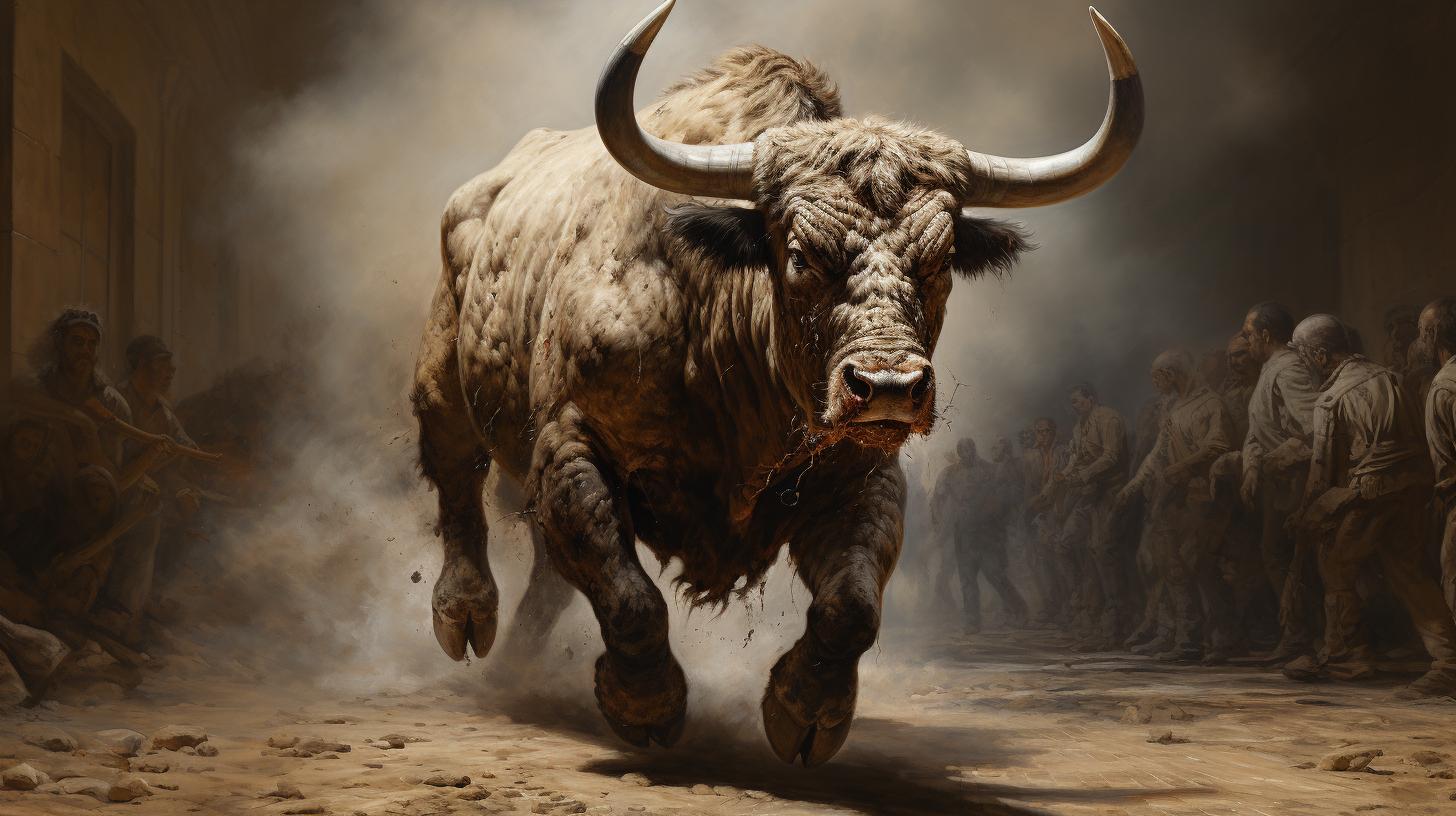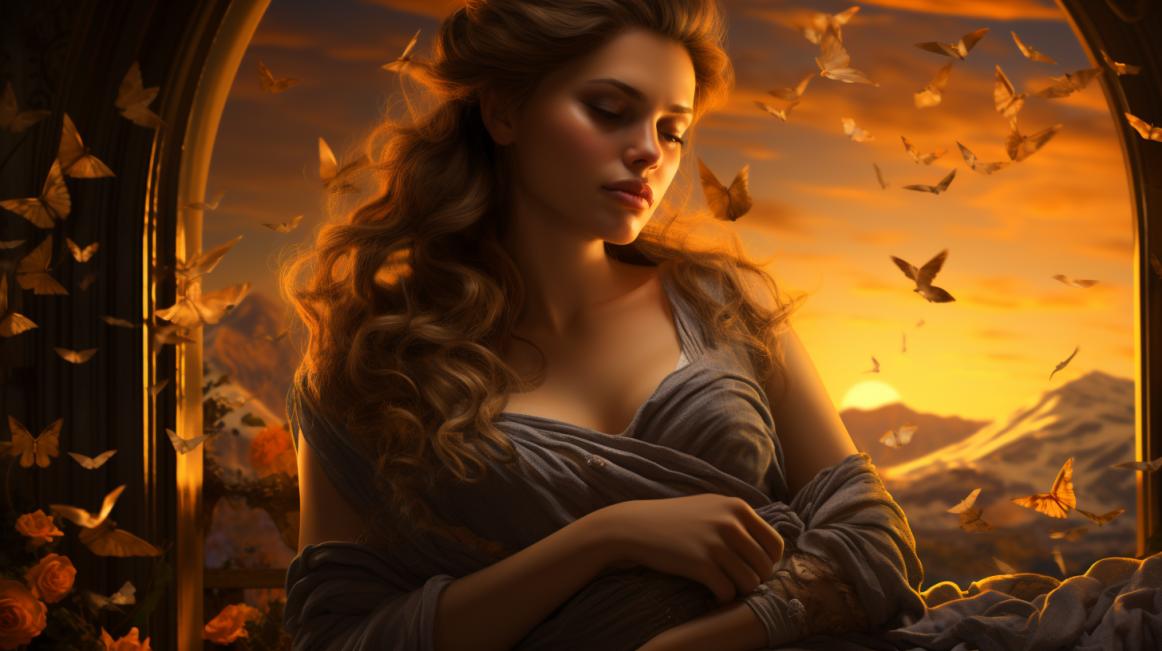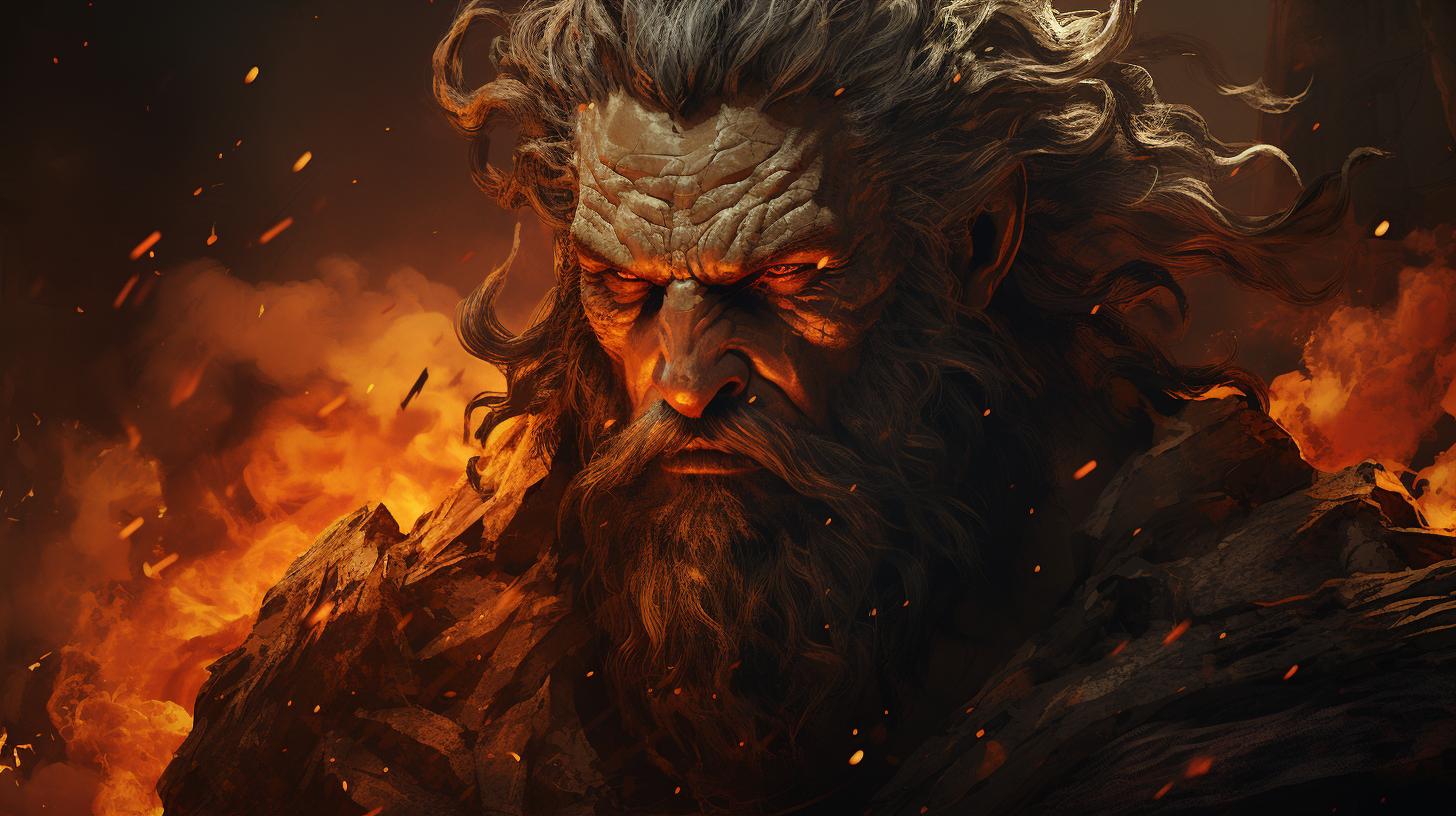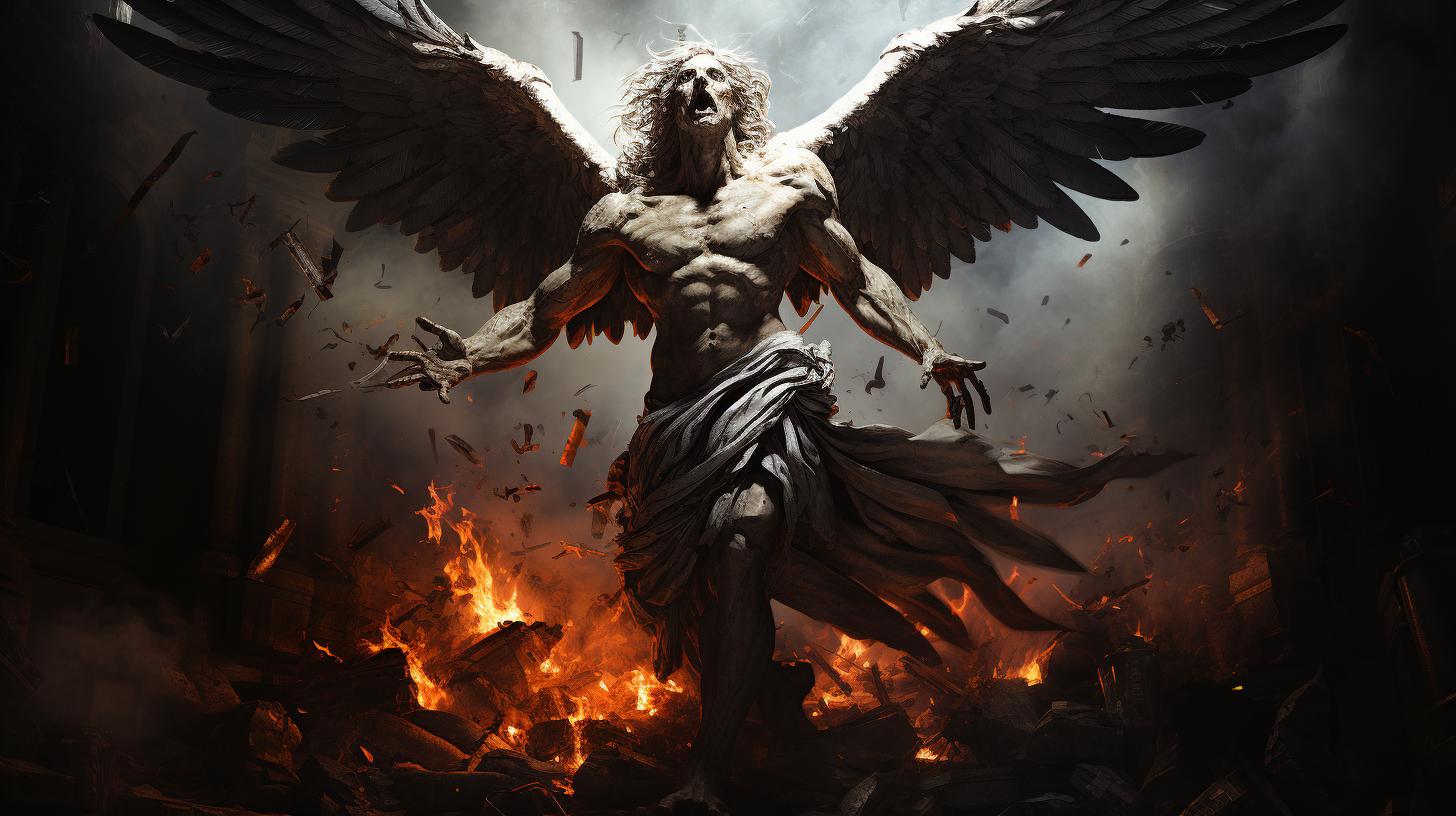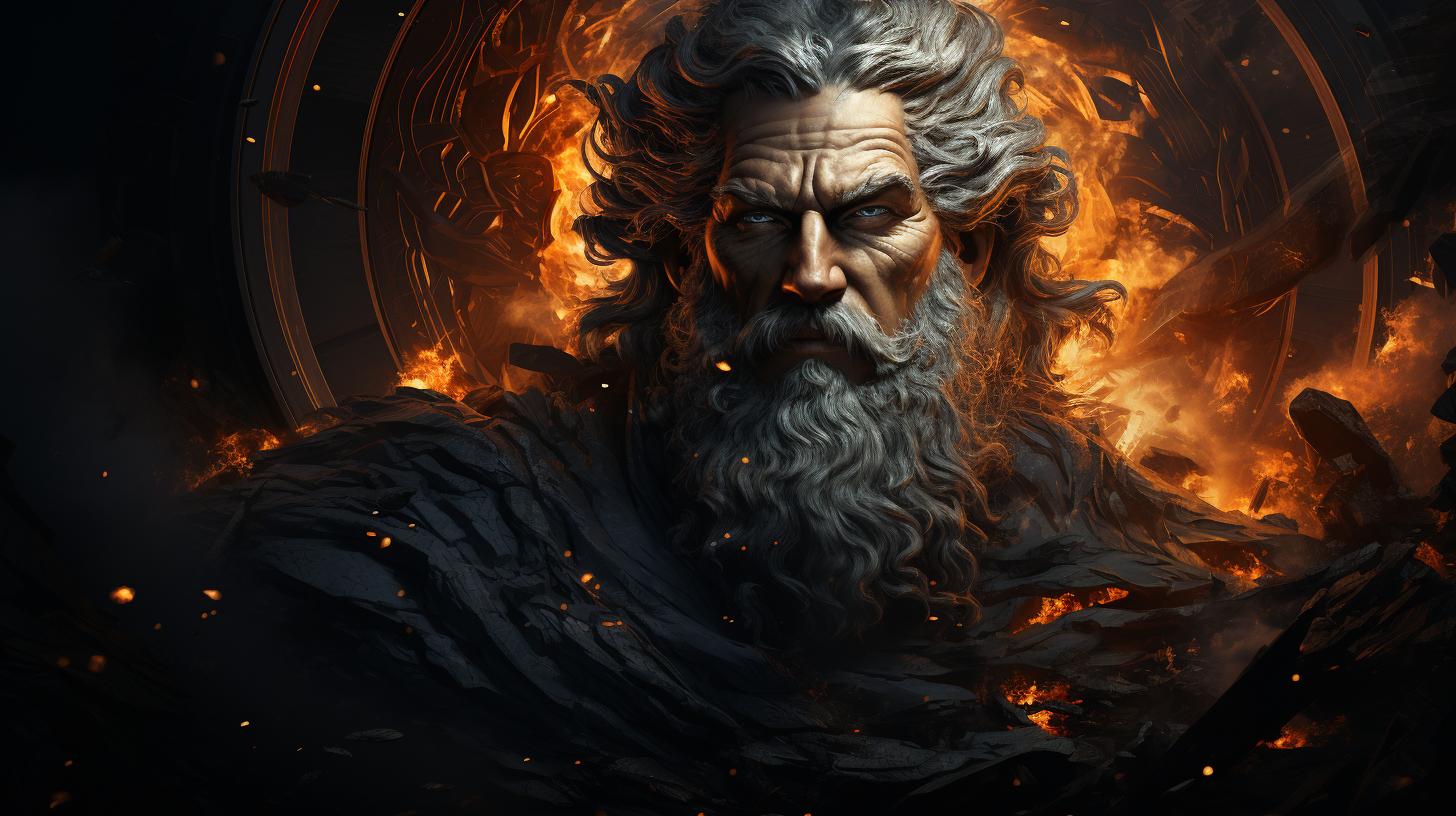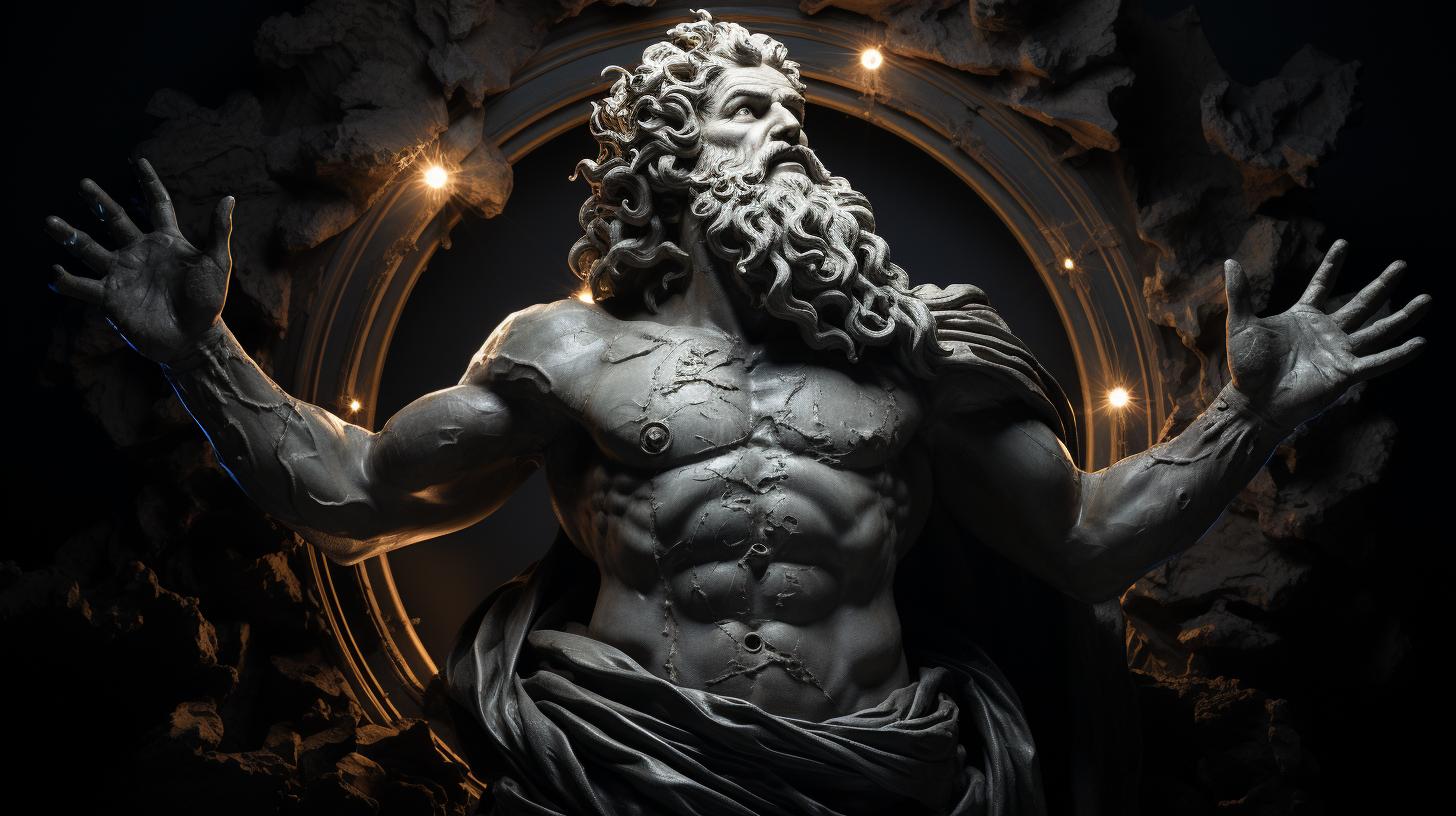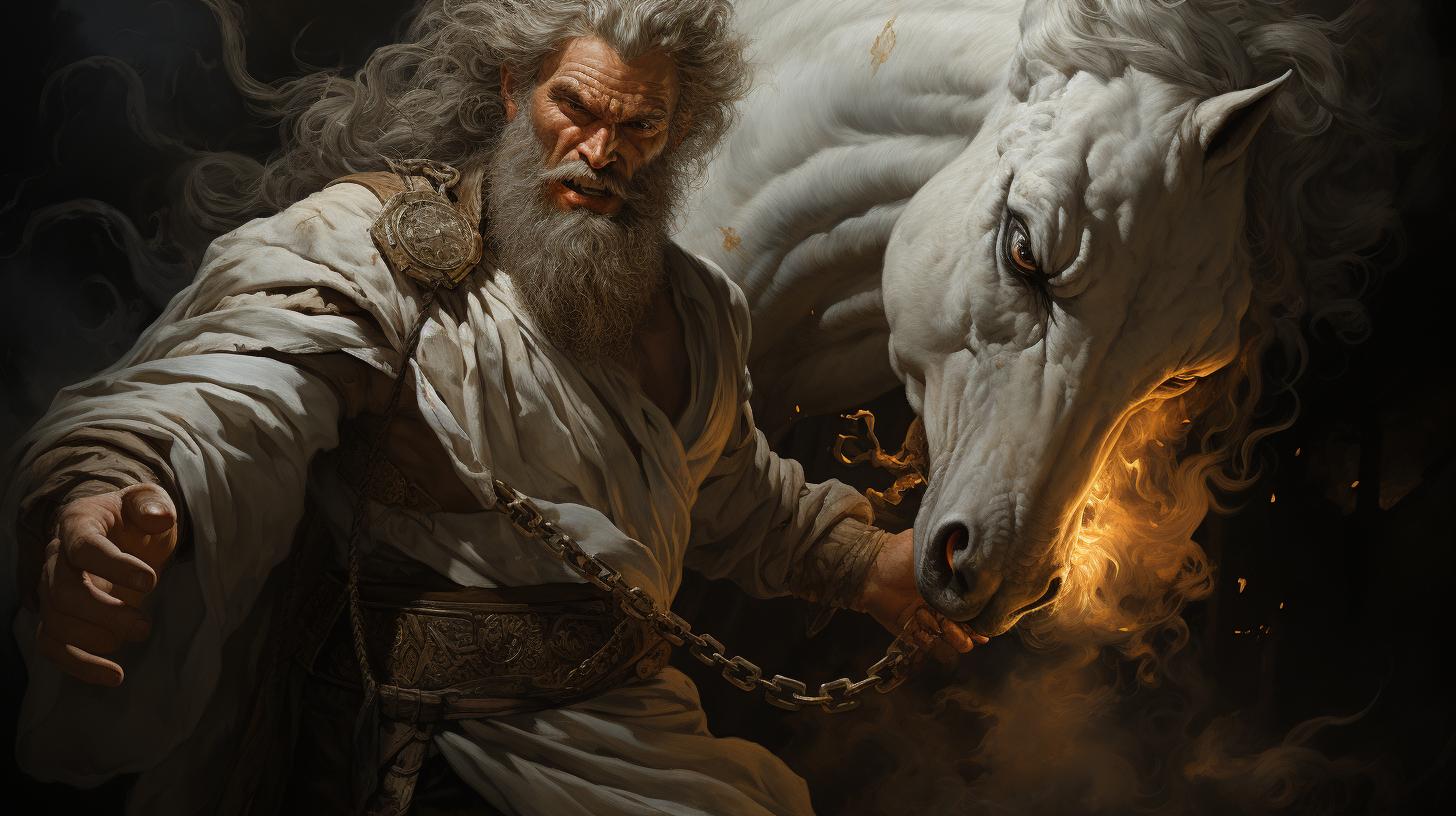Hippalectryon: Unraveling the Mysteries of Greek Mythology’s Hybrid Creature
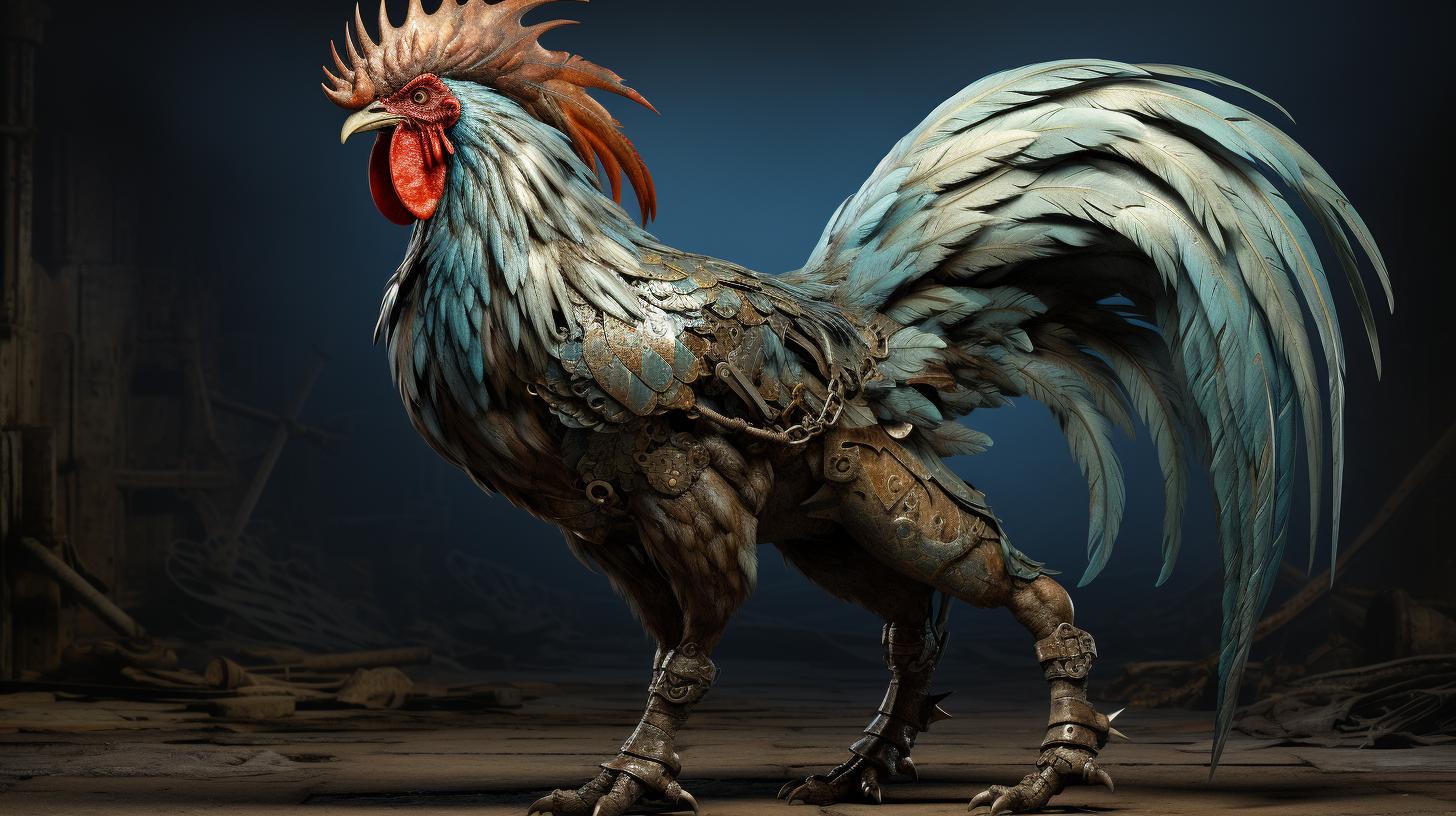
The Hippalectryon, a little-known creature from ancient Greek mythology, is an intriguing hybrid combining the front quarters of a horse with the wings, tail, and hind legs of a rooster.
While limited information is available about this enigmatic creature, it shares similarities with the famous winged horse Pegasus. Found in ancient Greek vase paintings and mentioned in fragments of plays, the Hippalectryon remains a subject of fascination.
Depicted as both docile and fierce, even ridden by children in some artistic representations, its domestication and behavior patterns are also worth exploring. Its presence in modern culture, as seen on platforms like Pinterest, adds another layer to its enduring intrigue.
The Origins of Hippalectryon
The Hippalectryon, a creature of mystical origins, holds a significant place in ancient Greek mythology. This section explores the ancient beliefs and myths that surround hybrid creatures, shedding light on the context in which the Hippalectryon emerged.
Ancient Greek beliefs and myths surrounding hybrid creatures
Ancient Greeks held a rich tradition of mythology, wherein hybrid creatures played a prominent role. These creatures were believed to embody the merging of different animal species, symbolizing the crossing of boundaries between the natural and the supernatural realms.
The concept of hybridity fascinated the Greeks, representing a fusion of diverse attributes and supernatural powers.
Mythical beings like the Centaurs, half-human and half-horse, and the Sphinx, with the body of a lion and the head of a human, exemplify the ancient Greeks’ fascination with hybrid creatures.
These fantastical beings were often portrayed as powerful and sometimes terrifying, reflecting the duality of their nature.
Connection to the Griffin and Hippocampus mythologies
The Hippalectryon finds its roots intertwined with other mythological creatures, particularly the Griffin and the Hippocampus.
The Griffin, a creature with the body of a lion and the head, wings, and talons of an eagle, shared similarities with the Hippalectryon’s hybrid form.
Both creatures embodied a blend of attributes from different animals, creating mythical beings that were both magnificent and fearsome.
The Hippocampus, in Greek mythology, was a creature with the upper body of a horse and the tail of a fish.
While it differed from the Hippalectryon in terms of physical characteristics, the presence of hybridity and the combination of animal features resonated across both mythical creatures.
These connections between the Hippalectryon, Griffin, and Hippocampus showcase the intricate tapestry of Greek mythology, where diverse creatures were woven into a complex web of interconnected stories and symbolism.
Hippalectryon: The Hybrid Creature
The Hippalectryon is a fascinating and unique creature from ancient Greek mythology. This hybrid creature combines the front quarters of a horse with the wings, tail, and hind legs of a rooster.
Its distinctive appearance sets it apart from other creatures in Greek mythology.
Description and Characteristics of the Hippalectryon
The Hippalectryon has the body of a horse, including its head, neck, and forelimbs. However, instead of hind legs, it possesses powerful rooster legs with sharp talons. Its tail also resembles that of a rooster, with long feathers and a fan-like shape.
The most extraordinary feature of the Hippalectryon is its large, majestic wings, allowing it to glide through the air with grace and agility.
In terms of size, the Hippalectryon is similar to an average-sized horse.
Its feathers are vibrant and colorful, often resembling the plumage of a rooster. Despite its hybrid nature, the Hippalectryon possesses the strength and endurance of a horse, coupled with the agility and alertness of a rooster.
Comparison to Other Hybrid Creatures in Ancient Greek Culture
While the Hippalectryon is a unique creature in Greek mythology, it shares similarities with other hybrid creatures that have captivated ancient Greek culture. One such creature is the Griffin, a legendary creature with the body of a lion and the head and wings of an eagle.
Both the Hippalectryon and the Griffin are characterized by their combination of animal features, showcasing the Greek fascination with wild and mythical creatures that embody power and majesty. Despite their different combinations of animal traits, these hybrid creatures hold a special place in Greek mythology and are often associated with noble qualities and extraordinary abilities.
Other hybrid creatures in Greek mythology include the Chimera, with a lion’s head, a goat’s body, and a serpent’s tail, and the Hippocampus, which has the head and forelimbs of a horse and the tail of a fish.
These creatures, like the Hippalectryon, embody the imaginative nature of Greek mythology and the blending of various animal elements to create captivating and awe-inspiring beings.
Depictions in Ancient Artwork
Depictions of the Hippalectryon in ancient Greek vase paintings provide valuable insights into the symbolism and meaning associated with this unique creature. These artistic renderings offer a window into the ancient Greeks’ perception of the Hippalectryon and its cultural significance.
Analysis of Hippalectryon representations in ancient Greek vase paintings
The analysis of Hippalectryon representations in ancient Greek vase paintings reveals a consistent portrayal of this hybrid creature. The artwork often showcases the distinctive combination of a horse’s front quarters with the wings, tail, and hind legs of a rooster.
The meticulous attention to detail in these depictions reflects the ancient Greeks’ admiration for the technological and artistic prowess of their time.
Various stylistic elements can be observed in these vase paintings.
The Hippalectryon is commonly depicted in a dynamic and energetic pose, conveying a sense of strength and power. The attention given to the creature’s intricate anatomy showcases an appreciation for nature’s diversity and the imagination of the artist.
The presence of the Hippalectryon in these ancient Greek vase paintings is often associated with scenes of battle or heroic quests, emphasizing its mythical and heroic nature. These artworks serve as a visual record of ancient Greek mythology and offer a glimpse into the cultural significance of the Hippalectryon in the collective imagination of the time.
Symbolism and meaning behind the artistic renderings
The symbolism and meaning behind the artistic renderings of the Hippalectryon in ancient Greek vase paintings are subject to interpretation. Scholars believe that the combination of a horse and a rooster in this hybrid creature represents the fusion of strength, agility, and vigilance – qualities essential for a warrior or a hero.
Furthermore, the juxtaposition of the horse and rooster elements may symbolize the harmony between land and sky, highlighting the unification of earthly and celestial realms. The Hippalectryon’s ability to traverse both realms reflects its mythical nature and suggests a link between mortal and divine realms.
The presence of the Hippalectryon in battle scenes indicates its association with courage and heroism. Its inclusion in ancient Greek vase paintings may have served as a visual reminder of the heroic deeds and virtues valued by the ancient Greeks.
Overall, the artistic renderings of the Hippalectryon in ancient Greek vase paintings provide valuable insights into the symbolism and meaning attributed to this fascinating creature. These depictions offer a glimpse into the ancient Greek worldview, their understanding of mythological creatures, and the cultural significance of the Hippalectryon in their society.
Mythological References
References to the Hippalectryon can be found in ancient Greek plays by prominent playwrights Aristophanes and Aeschylus, providing valuable insights into the creature’s significance in Greek mythology.
References to the Hippalectryon in ancient Greek plays by Aristophanes and Aeschylus
In Aristophanes’ comedic play “The Birds,” the Hippalectryon is mentioned as one of the fantastical creatures inhabiting the imaginary bird city of Cloud Cuckoo Land.
While the specific role of the Hippalectryon in the play is not elaborated upon, this reference showcases its inclusion in the rich tapestry of mythical creatures that the play explores.
In Aeschylus’ tragic trilogy “The Oresteia,” the Hippalectryon is alluded to in fragments that have survived over time.
Although the exact context and significance of these references remain unclear, they indicate that the Hippalectryon held some symbolic or thematic relevance within the broader narrative of the trilogy.
Role and significance in Greek mythology
While the precise role and significance of the Hippalectryon in Greek mythology are not extensively documented, its hybrid nature and association with Pegasus suggest that it represents a blending of avian and equine symbolism.
This fusion may symbolize the joining of different realms or the convergence of contrasting attributes.
As with many mythical creatures, the Hippalectryon might have symbolized various aspects of Greek culture, such as the harmony or tension between civilization and nature, the fluidity between different species, or the idea of transcending boundaries and embracing the extraordinary.
Further exploration of additional mythological sources and scholarly interpretations could shed more light on the specific role and symbolic significance of the Hippalectryon in Greek mythology.
Domestication and Riding
Domestication and riding of the Hippalectryon were significant aspects of its portrayal in ancient artwork and further shed light on the behavior patterns of this mythical creature. Artistic representations from ancient Greek vase paintings reveal that the Hippalectryon could be ridden, defying the expectations of its hybrid nature.
Accounts of Hippalectryon being ridden, even by children, in ancient artwork
Ancient Greek artworks depict scenes where individuals, including children, can be seen riding the Hippalectryon. These visual depictions indicate that the creature could be tamed and ridden, suggesting potential for domestication.
Children astride the Hippalectryon might suggest the ease of taming and the creature’s affinity towards younger individuals. The cooperation and willingness displayed by the Hippalectryon in these artistic renderings provide valuable insights into its domestication potential.
Insights into the domestication and behavior patterns of the creature
The depictions of the Hippalectryon being ridden in ancient artwork offer valuable clues about its domestication and behavior patterns. The ease with which it can be mounted suggests that it might have been a docile creature, capable of forming a bond with humans.
Although typically portrayed as a timid creature, the Hippalectryon could become fiercely territorial if it perceived a threat to its family. This duality in behavior patterns highlights the importance of understanding its temperament and addressing its social needs when attempting to domesticate it.
Further research and analysis of ancient artwork and written accounts might provide additional insights into the domestication process of the Hippalectryon, shedding light on how the ancient Greeks interacted with and harnessed the mythological qualities of this unique hybrid creature.
Contemporary Perceptions and Influences
The presence of the term ‘Hippalectryon’ in modern culture, particularly on social media platforms like Pinterest, is a testament to the enduring fascination with Greek mythological creatures. As fantastical beings with unique attributes, these creatures continue to captivate the imagination of people today.
The presence of the term ‘Hippalectryon’ on social media platforms
Social media platforms, such as Pinterest, have become popular hubs for sharing and exploring various forms of mythological content. Search queries and hashtags related to ‘Hippalectryon’ reveal a vibrant community interested in discovering more about this lesser-known Greek creature.
From artwork and illustrations to discussions about its origins and symbolism, enthusiasts use social media to unearth the hidden lore surrounding the Hippalectryon.
Examination of the creature’s popularity and relevance
While the Hippalectryon may not be as widely recognized as other mythological beings, its unique appearance and fusion of horse and rooster attributes appeal to those seeking a deeper understanding of Greek mythology.
Scholars and enthusiasts analyze its symbolism and explore its connections to other hybrid creatures, contributing to its growing popularity and relevance.
Recap of the key points discussed in the article
- Ancient Greek beliefs and myths introduced hybrid creatures like the Hippalectryon
- The Hippalectryon shares connections with other mythical creatures such as the Griffin and the Hippocampus
- Detailed descriptions and characteristics of the Hippalectryon
- Comparisons to other hybrid creatures within Greek culture
- Analyzing Hippalectryon representations in ancient Greek vase paintings
- Understanding its significance in ancient Greek plays and mythology
- Accounts of Hippalectryon being ridden, even by children, in ancient artwork
- Insights into the domestication and behavior patterns of the Hippalectryon
Reflection on the enduring fascination with Greek mythological creatures
The unyielding captivation with mythological creatures speaks to a timeless fascination embedded within human culture.
The allure of Greek mythology, in particular, continues to inspire awe and curiosity, as people marvel at the imaginative beings that once shaped narratives and beliefs. The Hippalectryon’s inclusion in this vast pantheon of mythological creatures evokes a sense of wonder and fuels the ongoing exploration of ancient Greek lore in contemporary society.
.











